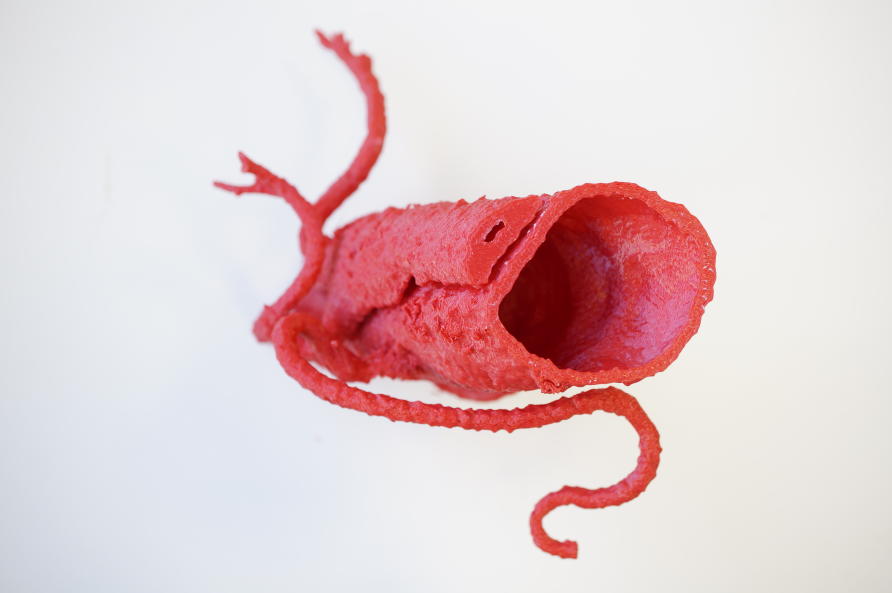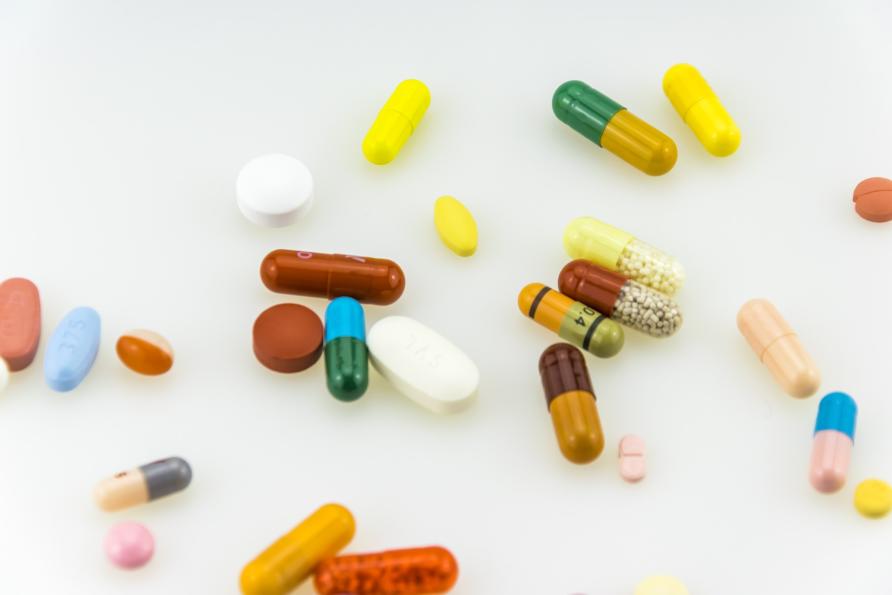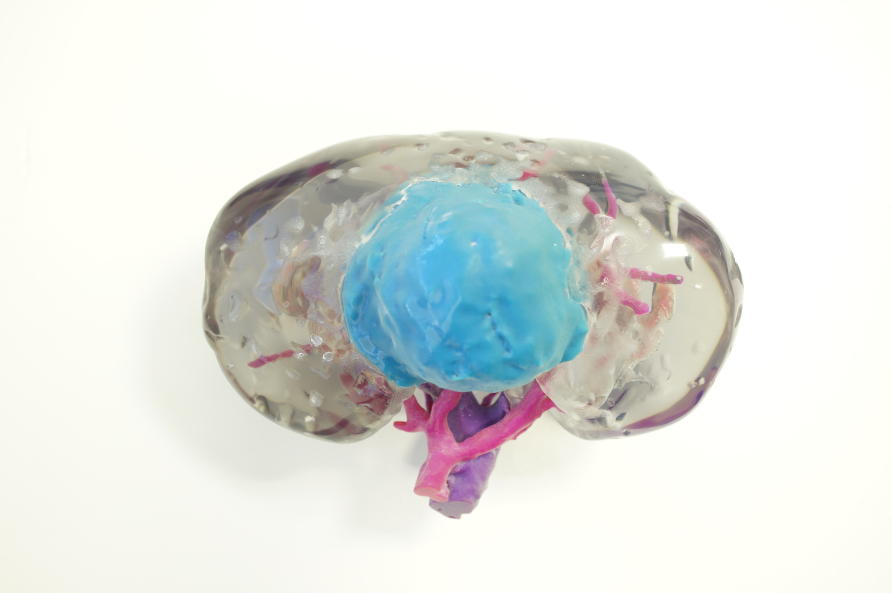Before inserting and expanding a pen-sized stent into someone’s aorta, the hose-like artery that carries our blood away from the heart, surgeon Jason Chuen likes to practice on the patient first. Not for real of course, but in plastic.
Which explains the 3D printer in his office and the brightly coloured plastic aortas that line his window sill at the Austin Hospital in Melbourne. They are all modelled from real patients and printed out from CT scans, ultrasounds and x-rays.“By using the model I can more easily assess that the stent is the right size and bends in exactly the right way when I deploy it,” says Mr Chuen, Director of Vascular Surgery at Austin Health and a Clinical Fellow at the University of Melbourne.
3D printing technology, he says, is going to transform medicine, whether it is patient-specific surgical models, custom-made prosthetics, personalised on-demand medicines, or even 3D printed human tissue. And his do-it-yourself approach has now grown into a 3D Medical Printing Laboratory at the hospital with help from the University of Melbourne’s Department of Mechanical Engineering.
“At the moment 3D printing is at the cutting edge of medical research, but in the future the technology will be taken for granted by all of us in healthcare,” says Mr Chuen.
At its core 3D printing is the use of computer guidance technology to create 3D objects from digital plans by applying layers of material, such as heated plastic, or powders in the case of metals and ceramics. It is being used to print out anything from toys and food, to warships producing on-demand spare parts and even drones. Medicine is just another frontier.

In the Medical Journal of Australia Mr Chuen and his Austin colleague Dr Jasamine Coles-Black have recently published an article aimed at alerting medical professionals to the potential of 3D printing. Here are their top five areas that 3D printing is set to change medicine:
Bioprinting and tissue engineering
It sounds like something out of Frankenstein, but could we eventually 3D print human organs? Not exactly, says Mr Chuen. But he’s convinced that in the future we will be able to 3D print human tissue structures that can perform the basic functions of an organ, replacing the need for some transplants.
Scientists are already using 3D printing to build “organoids” that mimic organs at a tiny scale and can be used for research. They are built using stem cells that can be stimulated to grow into the functional unit of a particular organ, such as a liver or kidney. The challenge he says is to scale up organoids into a structure that could boost a failing organ inside a patient.
Such “bioprinting” involves using a computer-guided pipette that takes up cell cultures suspended in nutrient rich solution and “prints” them out in layers suspended in a gel. Without the gel the cells would simply become a watery mess. The problem says Mr Chuen is that once inside the gel, cells can die in a matter of minutes. This isn’t a problem for small structures like organoids that can be built quickly and then transferred back into a nutrient solution. But it is a problem when attempting to make something larger like an organ because the initial layers of cells will die before the organ is completed.
“Unless there is some breakthrough that enables us to keep the cells alive while we print them, then I think printing a full human organ will remain impossible. But where there is potential is in working out how to reliably build organoids or components that we could then bind together to make them function like an organ,” says Mr Chuen.
Pharmacology
People suffering from a range of ailments, such as the elderly, are often dependent on taking multiple pills throughout the day. But imagine if one pill could replace the ten pills your doctor has prescribed? According to Mr Chuen, 3D printing is on the way to making this possible, opening up a whole new world of customised medicines.

Rather than simply embedding a single drug in a pill that is designed to dissolve and release the drug at a set time, the precision of 3D printing means pills can be designed to house several drugs, all with different release times. A 3D printed “polypill” that contains three different drugs has already been developed for patients with diabetes and hypertension.
It maybe that in the future instead of a prescription your doctor will be giving you a digital file of printing instructions.
Surgical rehearsal
Studies of surgeons using 3D printed models to rehearse procedures have shown that operations can be completed faster and with less trauma for patients. The potential cost savings alone are considerable. As Mr Chuen points out, running an operating theatre can cost AUD$2,000 an hour. That is over AUD$30 a minute.
